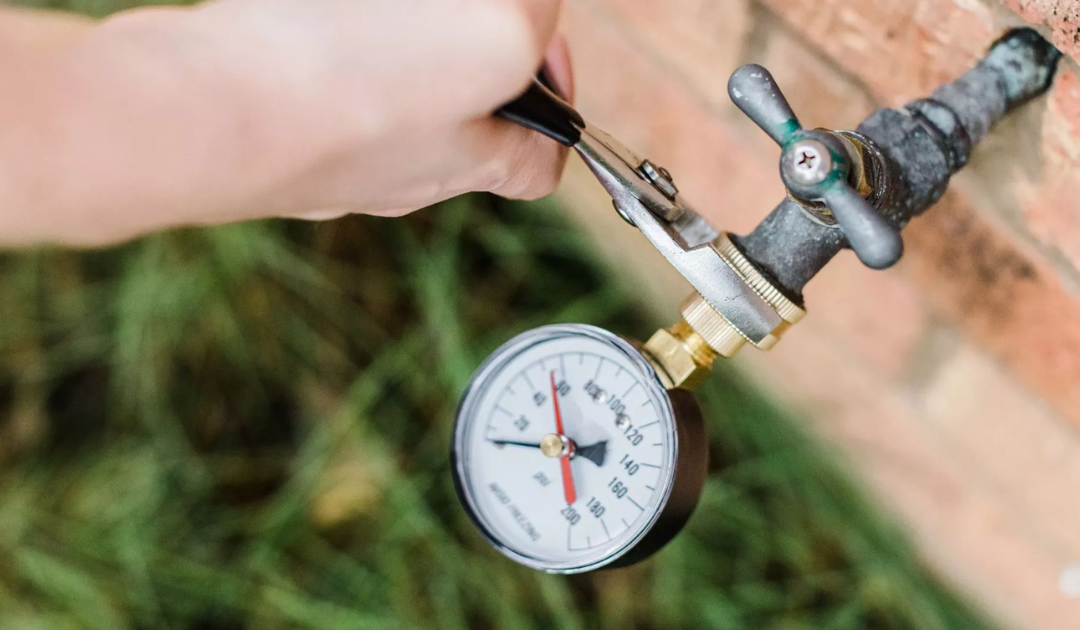The Advice to Rectifying Low Water Pressure in Your Home
The Advice to Rectifying Low Water Pressure in Your Home
Blog Article
On this page underneath you can locate a bunch of great points when it comes to 4 Ways to Troubleshoot Low Water Pressure.

Low water stress in your house can be a discouraging problem, influencing whatever from bathing to washing recipes. If you're experiencing weak water flow, there are a number of feasible causes and services to check out. In this overview, we'll review usual reasons for low tide pressure and practical steps to attend to the problem efficiently.
Introduction to Low Tide Pressure
Low tide pressure occurs when the flow of water from your faucets, showers, and other components is weaker than typical. This can make everyday jobs more difficult and less effective. Recognizing the reasons for low tide pressure is vital to finding the best option.
Common Reasons For Low Tide Pressure
Pipe Obstructions
Over time, pipes can end up being clogged with natural resource, sediment, or debris, limiting the circulation of water. This is a common issue in older homes with galvanized steel pipelines.
Corrosion
Deterioration within pipelines can lead to leaks and lowered water pressure. Corrosion buildup can constrict water circulation, particularly in maturing plumbing systems.
Faulty Stress Regulatory Authorities
Pressure regulators are accountable for maintaining constant water stress in your house. If they malfunction, it can result in low tide stress or unequal circulation throughout your house.
Local Water System Issues
Sometimes, the trouble exists outside your home. Community water system concerns, such as main line leaks or upkeep work, can momentarily lower water pressure in your location.
Exactly How to Diagnose Low Tide Pressure
Checking Faucets and Fixtures
Beginning by examining the water pressure at various faucets and fixtures throughout your home. If the problem is separated to details areas, it may show localized problems.
Inspecting Pipelines
Evaluate visible pipes for signs of leaks, rust, or blockages. Take note of any kind of unusual noises, such as knocking or rattling pipes, which might show issues within the plumbing system.
Consulting with a Plumber
If you're incapable to identify the source of low tide stress, consider employing a specialist plumber to perform an extensive examination. They can identify underlying problems and advise ideal remedies.
Do It Yourself Solutions to Fix Low Tide Pressure
Cleaning Up Aerators and Showerheads
Natural resources can collect in aerators and showerheads, reducing water flow. Get rid of and cleanse these parts regularly to improve water stress.
Flushing Water Heater
Sediment buildup in the hot water heater can limit flow and minimize performance. Purging the storage tank periodically aids remove debris and keep optimum performance.
Inspecting Pressure Regulatory Authority
Ensure that the stress regulator is functioning appropriately. Changing or changing the regulatory authority can help restore appropriate water stress throughout your home.
Clearing Up Clogs in Water Lines
For minor clogs, attempt utilizing a plumbing snake or chemical drainpipe cleaner to clear obstructions in pipes. Be cautious when utilizing chemicals and adhere to safety and security standards.
When to Call a Specialist Plumber
If do it yourself initiatives stop working to settle the problem or if you presume considerable plumbing problems, it's ideal to seek help from a qualified plumber. They have the knowledge and devices to address intricate issues securely and efficiently.
Preventive Measures to Maintain Water Stress
Routine Maintenance
Set up regular upkeep for your plumbing system to stop issues such as deterioration, leakages, and clogs. Resolving minor problems early can aid prevent even more considerable repair work later.
Setting Up a Stress Booster
Think about setting up a pressure booster pump to improve water stress in areas with continually reduced circulation. This can be specifically helpful for multi-story homes or homes with high-demand fixtures.
Tracking Water Usage
Be mindful of water use routines and stay clear of overtaxing the plumbing system. Basic adjustments, such as incredible showers and laundry loads, can assist keep appropriate water pressure.
Verdict
Dealing with low tide pressure can be aggravating, but determining the underlying reasons and carrying out suitable solutions can recover optimal flow throughout your home. Whether it's cleaning up aerators, inspecting pipelines, or speaking with a plumber, taking positive steps can make certain a constant supply of water for your daily needs.
FOUR WAYS TO FIX LOW WATER PRESSURE NOW
Turning on a shower or faucet only to find the water comes out in a sad, slow drizzle is never a good feeling. How exactly are you supposed to wash a pan or take a quick shower when it takes 10 minutes just to rinse off a little soap? The good news is that when your water pressure is bad, there's always a cause: typically one that can be easily fixed. Here are some of the most common causes of low pressure and what you can do to fix the issue:
DEBRIS AND MINERAL DEPOSIT BUILDUPS
If you notice low water pressure from just one or two of the fixtures in your house, the problem likely has to do with debris buildup. Water is full of minerals and other debris, all of which can accumulate in your pipes and on your fixtures. This can cause a blockage that affects how much water flows through. To fix this, try filling a small plastic bag with white vinegar, and use a rubber band to hang it around your showerhead or faucet. Let the head of the fixture soak for a few hours, and the vinegar should loosen the deposits.
WATER LEAKS
Leaks are another common cause of low water pressure. If water is flowing out of your plumbing through a hole or crack before it can reach your fixture, the pressure coming out of the faucet or showerhead will be lower. A plumbing professional is your best bet for finding and repairing a leak in your water supply pipes.
Leaks are another common cause of low water pressure. If water is flowing out of your plumbing through a hole or crack before it can reach your fixture, the pressure coming out of the faucet or showerhead will be lower. A plumbing professional is your best bet for finding and repairing a leak in your water supply pipes.
FOUR WAYS TO FIX LOW WATER PRESSURE NOW
Turning on a shower or faucet only to find the water comes out in a sad, slow drizzle is never a good feeling. How exactly are you supposed to wash a pan or take a quick shower when it takes 10 minutes just to rinse off a little soap? The good news is that when your water pressure is bad, there's always a cause: typically one that can be easily fixed. Here are some of the most common causes of low pressure and what you can do to fix the issue:
DEBRIS AND MINERAL DEPOSIT BUILDUPS
If you notice low water pressure from just one or two of the fixtures in your house, the problem likely has to do with debris buildup. Water is full of minerals and other debris, all of which can accumulate in your pipes and on your fixtures. This can cause a blockage that affects how much water flows through. To fix this, try filling a small plastic bag with white vinegar, and use a rubber band to hang it around your showerhead or faucet. Let the head of the fixture soak for a few hours, and the vinegar should loosen the deposits.
WATER LEAKS
Leaks are another common cause of low water pressure. If water is flowing out of your plumbing through a hole or crack before it can reach your fixture, the pressure coming out of the faucet or showerhead will be lower. A plumbing professional is your best bet for finding and repairing a leak in your water supply pipes.
Leaks are another common cause of low water pressure. If water is flowing out of your plumbing through a hole or crack before it can reach your fixture, the pressure coming out of the faucet or showerhead will be lower. A plumbing professional is your best bet for finding and repairing a leak in your water supply pipes.
A VALVE ISSUE
If you have low water pressure throughout your home, check your main shut-off valve to make sure it's completely open. You may also want to see if there's a pressure-reducing valve installed. If there is, have a plumber help you adjust the settings to get the pressure you're looking for.
OTHERS USING WATER
Believe it or not, your low water pressure could be caused by your neighbors. If you notice low pressure at certain times of day, it may be because you and the people living next to you have similar schedules - when everyone is showering at the same time, the pressure will be lower in every home. Low pressure throughout the neighborhood may also be caused by an issue with your municipal water supply. If that's the case, call the supplier to see if they're working on the issue.
https://www.rotorooter.com/blog/water-leaking/low-water-pressure-fixes/

I'm just very interested in 4 Ways to Troubleshoot Low Water Pressure and I really hope you appreciated the new blog entry. So long as you appreciated our post please be sure to share it. Thanks for being here. Revisit us soon.
Further Details Report this page